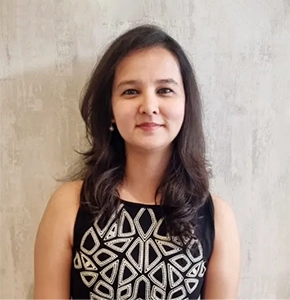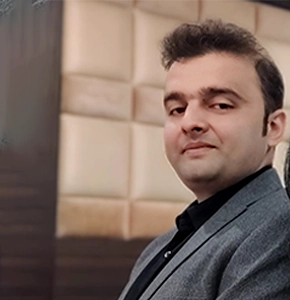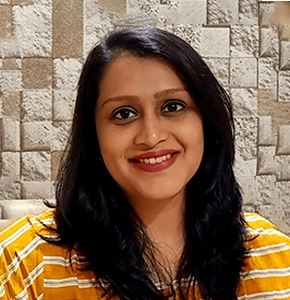
Anxiety is an emotion that every human being experiences in their daily life. It can sometimes be before a meeting with your boss or before appearing for a national-level exam. We often call this feeling being ‘scared’ or ‘fear,’ which is also true. Anxiety is understood as a constant fear of an event that has not happened yet or experiencing overwhelming thoughts.
When an individual experiences extreme and intense Anxiety, which is persistent and does not go away, it may lead to an Anxiety Disorder. Having an anxiety disorder can severely disrupt one’s personal, social, emotional, occupational, and spiritual life. That is why it is essential to learn how to cope with Anxiety and seek help at the right time.
What are the Different Types of Anxiety Disorder?
Anxiety is often explained as intense worry, nervousness, and fear of an event that our brain considers dangerous or scary. For example, a teenager who changes their school in the 11th class would fear the first day of school. A number of thoughts would run in the back of their mind, and that would cause Anxiety in the teenager.
However, an anxiety disorder consists of a lifestyle where the individual lives in constant, excessive, and uncontrollable fear. The actions, thoughts, and behaviors that are displayed by the individual when anxious can negatively impact one’s school, relationships, work, and other life aspects.
There are a number of anxiety disorders, which are briefly discussed below. Additionally, as you read further, you will learn about the symptoms, causes, and anxiety disorder treatment available for Anxiety Disorders.
Generalized Anxiety Disorder
Individuals with GAD have constant fear or worry about an event that they anticipate. The Anxiety is persistent even without any provocation. These people would constantly worry about work, family, friends, or money. The Anxiety makes it difficult to carry on with the daily tasks, which further leads to disruption in their personal, social, occupational, and spiritual aspects of life.
Panic Disorder
While fear and Anxiety are normal human emotions in stressful situations, panic attacks are not. Panic disorder consists of recurrent and intense panic attacks that appear from out of the blue. These attacks are extreme in nature and may leave the individual thinking that they are having a heart attack. Sometimes, these attacks may come without any provocation, and sometimes, triggering events around us may lead to an attack.
Social Anxiety Disorder
Feeling nervous or anxious before giving a presentation or a speech is normal. But when these feelings of nervousness and fear start interrupting our daily life, that is when it may become Social Anxiety Disorder. Individuals with Social Anxiety may find it difficult to make or keep friends, speak to family or teachers, maintain relationships, and would rather feel conscious and embarrassed most of the time.
Separation Anxiety Disorder
When an infant or a toddler is taken away from their caregiver, they cry and throw tantrums. This is normal till the age of 3 years, and most of the kids often outgrow this phase. But when older children throw tantrums, cry, or display anger when the caregiver is away, they may be showing symptoms of SAD. These symptoms cause a significant impact on the child’s life, like absenteeism, nightmares, and difficulty in making friends.
Specific Phobia
As the name suggests, a specific phobia is a fear of a particular thing or event. These can include phobias of airplanes, enclosed spaces, certain animals, blood, thunderstorms, and more. Individuals with Phobia may experience uncontrollable and intense fear and extreme Anxiety that becomes out of their control and disrupts their daily activities. You may also experience symptoms of tight chest, increased heartbeat, and nausea.
What are the Symptoms of Anxiety?
There are a number of symptoms of Anxiety Disorder, but it is not necessary that every human will experience the same symptoms. However, some common symptoms are:
- Feeling restless and wanting to move constantly.
- Worrying and finding it difficult to control it.
- Feeling irritable every now and then.
- Having trouble concentrating at work or school.
- Not being able to sleep properly, like disturbed sleep or insomnia.
What are the Treatment Options for Anxiety Disorders?
There are various options in terms of treatment for Anxiety Disorders. It is not necessary that all treatments will work for everyone; therefore, the professionals evaluate the client’s condition and formulate a treatment plan accordingly.
Treatment options include anxiety counseling and behavioral therapy.
1. Therapy for Anxiety
The most widely used therapies for anxiety disorders are Cognitive Behavioural Therapy, Acceptance and Commitment Therapy, and Exposure Therapy. CBT aims at managing negative thoughts and replacing them with positive ones. The sessions usually last for about 12 weeks but may exceed depending on the intensity of Anxiety.
Experts may sometimes recommend therapy along with medication, as it would help the individual cope faster. However, not every anxiety disorder requires medication.
Cognitive Behaviour Therapy helps in challenging the negative pattern of thoughts in the brain and aims at changing the troublesome feelings that lead to Anxiety. The therapist and the client work together on the thoughts, feelings, and beliefs of the client, due to which behavior takes place.
Acceptance and Commitment Therapy aims at teaching the client mindfulness techniques and helping the client develop skills that they can use in their daily life. The name of the therapy is self-explanatory, as it teaches the individual to accept their negative thoughts and symptoms. Additionally, the clients are encouraged to commit to getting better health and stay in touch with their beliefs and values. Exposure Therapy is helpful in cases of Phobia, Anxiety, OCD, and more.
Exposure therapy aims at breaking the cycle of avoidance and fear associated with a particular thing. The therapist helps the client in overcoming the fear while engaging with the trigger event/thing/activity. Some techniques include Systematic Desensitization, Graded Exposure, Flooding, and more.
3. Self-Help Techniques
There are several techniques that an individual can practice in order to control their Anxiety. Having an expert or professional is not possible 24/7; therefore, doctors have recommended some practices that an individual with anxiety can do to relax.
If you have an anxiety disorder, then practicing these techniques alone will not help you cope completely. However, people experiencing mild anxieties sometimes can definitely benefit from these techniques.
- Stress Management Techniques
- Relaxation techniques
- Speaking to friends and family or other support systems
- Exercise
- Having a balanced diet
- Mindfulness practices
Conclusion
Everyone experiences Anxiety every now and then, but this does not mean that you should not seek help when required. If you or someone you know is struggling with intense and uncontrollable Anxiety, connect with Reflect Within today and get the help you deserve. Professionals are there to help you cope and live with a happy mind every day. So, book your first session now!










